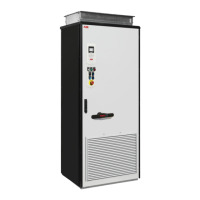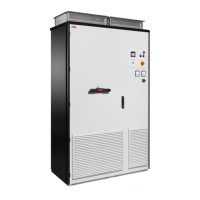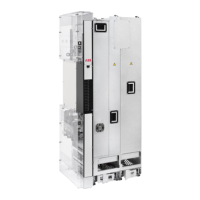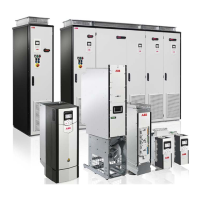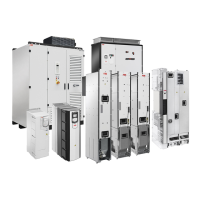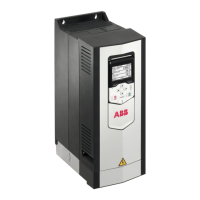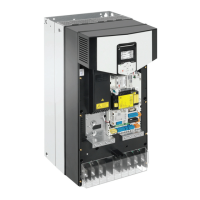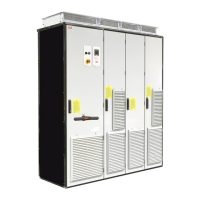Safety and protections
■ Emergency stop
The emergency stop signal is connected to the input selected by parameter 21.5. An
emergency stop can also be generated through fieldbus (parameter 6.1, bits 0…2).
The mode of the emergency stop is selected by parameter 21.4. The following modes
are available:
• Off1: Stop along the standard deceleration ramp defined for the particular reference
type in use
• Off2: Stop by coasting
•
Off3: Stop by the emergency stop ramp defined by parameter 23.23.
With Off1 or Off3 emergency stop modes, the ramp-down of the motor speed can be
supervised by parameters 31.32 and 31.33.
Note:
• For SIL 3 / PL e-level emergency stop functions, the drive can be fitted with a
TÜV-certified FSO-xx safety options module. The module can then be incorporated
into certified safety systems.
• The installer of the equipment is responsible for installing the emergency stop
devices and all additional devices needed for the emergency stop function to fulfill
the required emergency stop categories. For more information, contact your local
ABB representative.
• After an emergency stop signal is detected, the emergency stop function cannot be
canceled even though the signal is canceled.
• If the minimum (or maximum) torque limit is set to 0%, the emergency stop function
may not be able to stop the drive.
•
Speed and torque reference additives (parameters 22.15, 22.17, 26.16, 26.25 and
26.41) and reference ramp shapes (23.16…23.19) are ignored in case of emergency
ramp stops.
Settings and diagnostics
Parameters: 6.17 Drive status word 2 (page 156), 6.18 Start inhibit status word (page 157),
21.4 Emergency stop mode (page 252), 21.5 Emergency stop source (page 253), 23.23
Emergency stop time (page 274), 25.13 Min torq sp ctrl em stop (page 290), 25.14 Max
torq sp ctrl em stop (page 290), 25.15 Proportional gain em stop (page 290), 31.32
Emergency ramp supervision (page 337) and 31.33 Emergency ramp supervision
delay (page 338).
Program features 89
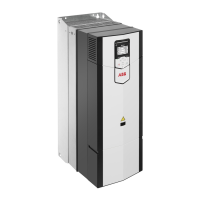
